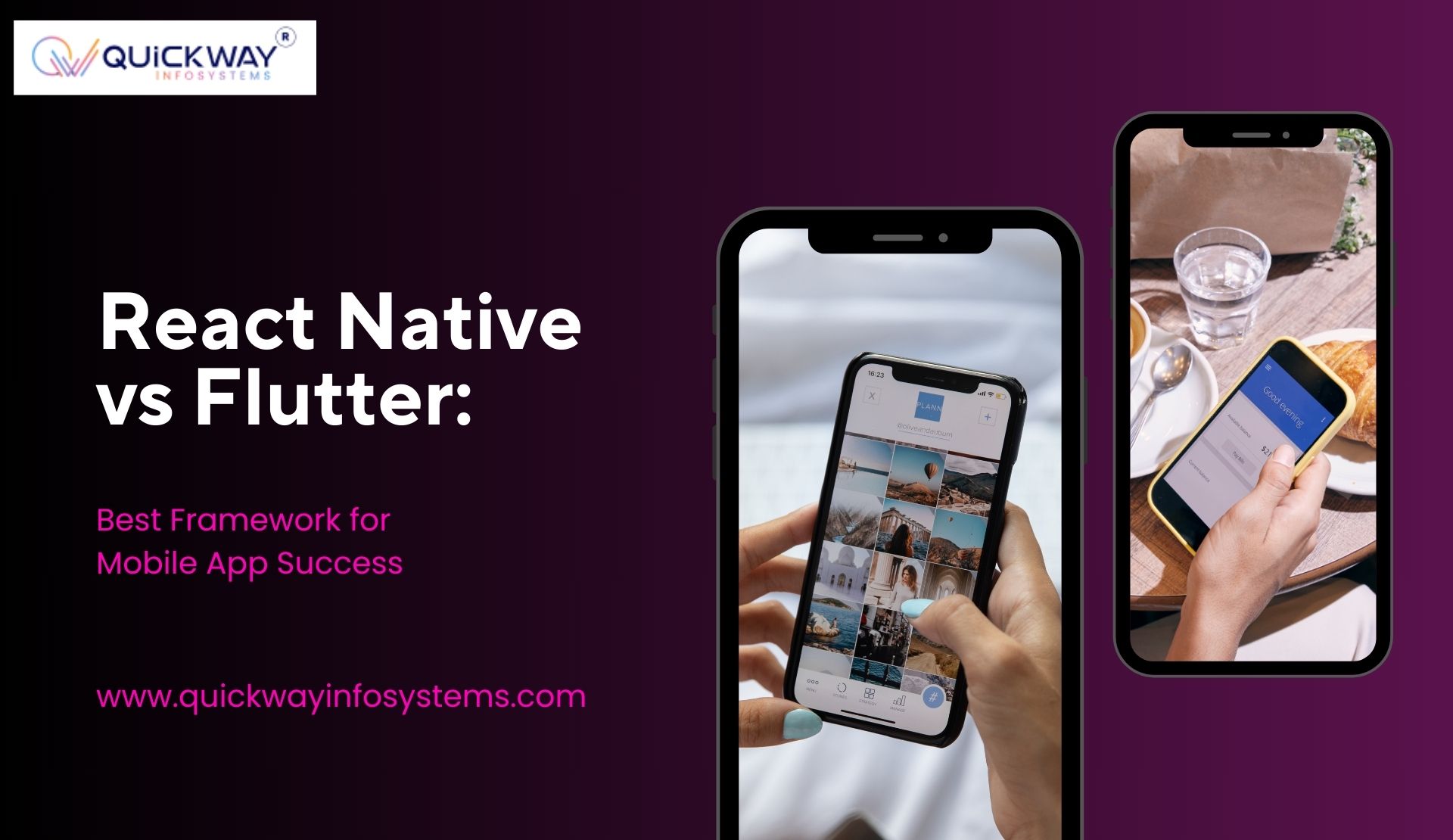
As mobile apps continue to dominate the digital space in 2025, businesses and developers are seeking the most efficient, scalable, and high-performing tools for cross-platform app creation. Two of the most popular frameworks leading the charge are React Native and Flutter. Both offer compelling benefits, but choosing the right one can significantly influence the success of your mobile app.
In this article, we’ll explore the strengths, limitations, and key differences between React Native and Flutter development, helping you decide which is the best fit for your mobile app success.
What is React Native?
React Native, developed by Facebook, is an open-source framework that enables developers to build mobile apps using JavaScript and React. Released in 2015, it allows for code reuse across iOS and Android platforms while maintaining a native look and feel.
What is Flutter?
Flutter, launched by Google in 2017, is a UI toolkit that uses the Dart programming language to build natively compiled applications for mobile, web, and desktop from a single codebase. It’s known for its fast performance, expressive UI, and flexible development experience.
Performance: Speed and Responsiveness
Performance is a key factor when determining the success of a mobile app. Flutter development typically offers better performance out of the box due to its direct compilation to native code using Dart. It avoids the bridge between native modules and app logic, reducing delays in communication and improving speed.
React Native, while capable of high performance, may face slight slowdowns due to its reliance on a JavaScript bridge to interact with native components. However, this gap is narrowing with tools like Hermes (a lightweight JavaScript engine) and optimized libraries.
Winner: Flutter, especially for complex, graphics-heavy apps.
Development Time and Learning Curve
React Native has a relatively low learning curve for developers familiar with JavaScript and React. Its wide usage means there’s strong community support, a wealth of libraries, and excellent documentation—making it easier to get started and speed up development.
Flutter development, on the other hand, requires learning Dart, which may be unfamiliar to many developers. However, Flutter’s widget-based architecture, hot reload, and consistent documentation make it easy to learn and highly productive once mastered.
Winner: React Native for faster onboarding; Flutter for structured development once familiar.
UI and Design Capabilities
Flutter shines in the UI department. With its rich set of customizable widgets and powerful rendering engine, Flutter allows developers to create highly branded and expressive UIs. It also ensures consistency across platforms, which can be vital for user experience.
React Native relies more on native components, which means apps look and feel more like their respective platforms (iOS/Android). However, achieving a uniform UI across both systems may require additional work and customizations.
Winner: Flutter development for pixel-perfect UI control and consistency.
Community Support and Ecosystem
React Native has a more mature and expansive community, thanks to its longer time in the market. It boasts a wide range of third-party libraries, plugins, and integrations with popular development tools.
Flutter is rapidly catching up, with Google’s backing and an ever-growing developer base. While the ecosystem is newer, it is evolving quickly with solid plugin support and consistent updates.
Winner: React Native (for now) in terms of ecosystem maturity.
Code Reusability and Maintenance
Both React Native and Flutter development offer cross-platform code sharing, which reduces development time and cost. However, Flutter allows for a higher degree of code reuse—even across web and desktop—due to its unified architecture.
In contrast, React Native apps sometimes require writing separate code for platform-specific components or features, especially in complex use cases.
Winner: Flutter, for broader code reuse and maintenance efficiency.
Scalability and Enterprise Adoption
Both frameworks are production-ready and scalable, but the choice often depends on the size and nature of the project. React Native powers some of the biggest names in tech, including Facebook, Instagram, and Airbnb. Its widespread adoption proves its capability for large-scale, high-traffic apps.
Flutter is also gaining traction among enterprises and startups alike. Companies like Alibaba, Google Pay, and BMW have adopted Flutter for scalable, high-performance mobile applications.
Winner: Tie – both frameworks are enterprise-ready.
Final Verdict: Which One is Best for Mobile App Success?
Choosing between React Native and Flutter development depends on your project’s specific goals, team expertise, and long-term vision:
-
Choose React Native if:
-
Your team is already skilled in JavaScript/React.
-
You need quick development with access to a mature ecosystem.
-
You want native-like apps with some platform-specific customization.
-
-
Choose Flutter if:
-
You prioritize beautiful, custom UIs across platforms.
-
Performance and speed are critical to your app.
-
You want to build for mobile, web, and desktop from a single codebase.
-
In 2025, both React Native and Flutter development offer modern, robust, and scalable solutions for mobile app success. The “best” framework ultimately aligns with your business needs, developer resources, and user expectations.